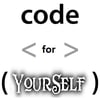Multi-experience (MX) applications are shaping the future of web and mobile applications by making them more immersive and interactive. With multi-experience applications, users can interact with a brand or business in a variety of ways, using a variety of devices and platforms.
Super-apps like WeChat, Paytm are growing in popularity because of the range of their offerings and the platform-agnostic multi-experience they provide to users. Multi-experience development platforms (MXDP) centralize all the activities involved in putting together a multi-experience application and are becoming increasingly popular.
According to this report, more than 2/3rd of all users are interested in apps with a great multi-experience. Considering the prospect of growth in the area of MX apps and development platforms, real device clouds have a significant role to play in the quality assurance or testing part.
Components of a multi-experience app journey

Visualizing multi-channel, omni-channel & multi-experience
What separates a MX app from a normal web or mobile app, is the range of supported platforms and interaction modalities. Here are some common components or touchpoints in a MX journey:
- Mobile apps: Mobile apps are the most common type of multi-experience application. They are designed to run on mobile devices such as smartphones and tablets, which dominate in terms of the number of devices and area coverage.
- Web apps: Web apps are designed to run on web browsers which provide access to internet sites through WWW protocols and a host of I/O and accessibility features like speech, camera, geolocation etc.
- Desktop apps: Desktop apps are designed to run on desktop computers. The most popular desktop operating system platforms in the world are Windows, MacOS and Linux.
- Chatbots: Chatbots are computer programs that simulate human conversation. They can be used to provide customer support or to automate tasks such as booking tickets or ordering products.
- Voice apps: Voice apps are designed to be controlled by voice commands. They can be used to perform tasks such as making phone calls or controlling smart home devices. Popular examples include Siri by Apple, Alexa by Amazon etc.
- Augmented reality (AR) apps: AR apps are designed to superimpose computer-generated images on the real world. They can be used for gaming, navigation or education. Microsoft Hololens and Google's Glasses are among the most popular AR platforms.
- Virtual reality (VR) apps: VR apps are designed to create a realistic, immersive experience. They can be used for gaming, entertainment or training. Quest by Meta , Vive by HTC are some of the commonly adopted VR platforms.
- Mixed reality (MR) apps: MR apps are designed to combine the real world with the virtual world. They can be used for gaming, entertainment or education.
- Wearables: Wearables are devices that can be worn on the body. They can be used to track fitness data, receive notifications or make payments. This is a rapidly expanding industry category with prices dropping rapidly across a wide range of devices.
- The Internet of Things (IoT): The IoT is a network of physical devices that are connected to the internet. These devices can be used to collect data or control devices remotely. Web browsers remain the most popular application touchpoint, though mobile apps are certainly on the rise. Other devices like smartwatches, smart-TVs, voice-driven assistants etc. are also becoming popular with dropping prices.
Rise of MXDPs

There are a number of multi-experience development platforms (MXDP) on the market like Microsoft's PowerApps platform, Google's Firebase, Oracle Mobile Hub etc., each with its own features and capabilities. Here are some reasons for the rise of multi-experience development platforms:
- The advent of Low-code/No-code: Low-code/no-code platforms can help accelerate the development of multi-experience app platforms by reducing the amount of coding required to build them. This can help to speed up the development process and make it easier to create complex applications. MXDPs often make use of these technologies to help accelerate development.
- Faster deployment of valuable digital experiences: As the world becomes more digitized, businesses need to be able to deploy new experiences quickly and easily in order to keep up with customer demands. Multi-experience development platforms make it possible to rapidly deploy new experiences across a variety of devices and platforms.
- The need for easier scalability: With multi-experience development platforms, businesses can easily scale their apps up or down as needed. This is due to the fact that these platforms are cloud-native, meaning they are designed to be run on cloud infrastructure.
- The need for better collaboration: Multi-experience development platforms offer opportunities for better collaboration between different teams within an organization. This is because they allow for a more visual approach to software development, which makes it easier for non-programmers to contribute.
- The need for faster decision-making: Multi-experience development platforms can help organizations make decisions more quickly, due to the fact that they streamline collaboration. This is because all stakeholders can easily see and contribute to the development process. The future of MXDPs is bright. They are becoming increasingly popular as the need for them grows. As new devices and modalities emerge, so too will new platforms to support them. We can expect to see more platforms that offer low-code and no-code development, as well as platforms that focus on specific modalities or devices. Because of a wide and ever-evolving range of touchpoints, MX apps have to keep on adding and updating support for every new relevant platform that comes to the markets. Also, even though many MXDPs come with a built-in set of testing functionality and support, most business use-cases will require elaborate tool-stacking and complicated workflows for quality assurance, which leads to a new set of challenges. Challenges with testing multi-experience applications The main challenges with quality assurance testing of multi-experience applications are:
- Ensuring compatibility across multiple devices and platforms: One of the main challenges with quality assurance testing of multi-experience applications is ensuring compatibility across multiple devices and platforms. With so many different types of devices and operating systems out there, it can be difficult to ensure that your app will work properly on all of them.
- Managing different interactions and touchpoints: Another challenge is managing different interactions and touchpoints. With a multi-experience app, users will interact with it in different ways depending on the device they are using. For example, they may use touch gestures on a mobile device, but use voice commands on a smart speaker. As a result, you need to make sure that all of these different interactions are tested and work correctly.
- Ensuring a consistent user experience: It is also important to ensure a consistent user experience across all touchpoints. This means that the app should work in the same way regardless of the device or platform that is being used. For example, if a user starts an interaction on a mobile app, they should be able to continue it on a website or chatbot without any issues.
- Testing different types of content: Another challenge is testing different types of content. With a multi-experience app, you may need to support different types of content, such as text, images, videos, and audio. This can be a challenge when it comes to testing, as you need to make sure that all of this content is displayed correctly on all devices and platforms.
- Managing different versions of the app: Another challenge is managing different versions of the app. As new devices and operating systems are released, you may need to create new versions of your app to support them. This can be a challenge when it comes to quality assurance testing, as you need to make sure that all of the different versions of the app are tested properly.
- Ensuring a seamless user journey: Finally, it is important to ensure a seamless user journey. This means that the app should be easy to use and navigate, and that there should be no errors or glitches. This can be a challenge when testing, as you need to make sure that the app is stable and that all of the different interactions work correctly. Testing multi-experience using Real Device Cloud With so many different types of devices and operating systems out there, it can be difficult to test your app on all of them. However, with a real device cloud, you can test your app on a wide range of devices without having to physically own them all. A real device cloud can help to ensure a consistent user experience. This means that the app should work in the same way regardless of the device or platform that is being used. For example, if a user starts an interaction on a mobile app, they should be able to continue it on a website or chatbot without any issues. There are a number of reasons why you should consider real device cloud for testing multi-experience apps:
- Ensure compatibility across multiple devices and platforms: One of the main challenges with quality assurance testing of multi-experience applications is ensuring compatibility across multiple devices and platforms. BrowserStack's Live real-device cloud platform allows you to test your app on a wide range of devices and operating systems, you can ensure compatibility and a seamless user experience. With such a wide range of test environments, you get the ability to recreate real user scenarios and device experiences. You can adjust real-world variables like network conditions, geo-location etc. Test accessibility features like navigability and screen readers. You can test notifications on devices. Also, get access to the developer tools section of browsers on a range of operating systems.
- Manage different interactions and touchpoints: With a multi-experience app, users will interact with it in different ways depending on the device they are using. For example, they may use touch gestures on a mobile device, but use voice commands on a smart speaker. As a result, you need to make sure that all of these different interactions are tested and work correctly. BrowserStack provides a platform that allows you to use features like mic, camera etc. to replicate a wide-ranging I/O exchange.
- Ensure a consistent user experience: This means that the app should work in the same way regardless of the device or platform that is being used. BrowserStack lets you test your app experience on different desktop OS', Mobile devices and web browsers. With the automated visual testing tool Percy, you can validate changes at the level of UI across a range of devices, automatically.
- Testing different types of content: Another challenge is testing different types of content. With a multi-experience app, you may need to support different types of content, such as text, images, videos, and audio. This can be a challenge when it comes to testing, as you need to make sure that all of this content is displayed correctly on all devices and platforms. BrowserStack lets you run your app on real devices so that you can be assured that your test environment is as close to production as possible.
- Managing different versions of the app: Another challenge is managing different versions of the app. As new devices and operating systems are released, you may need to create new versions of your app to support them. This can be a challenge when it comes to quality assurance testing, as you need to make sure that all of the different versions of the app are tested properly. BrowserStack provides a platform that allows you to easily manage different versions of your app, ensuring that all of them are tested properly.
- Ensuring a seamless user journey: Finally, the app should be easy to use and navigate, and there should be no errors or glitches. This can be a challenge when testing manually, as you need to make sure that the app is stable and that all of the different interactions work correctly. BrowserStack's automated visual testing and visual diff engine let you automatically detect changes and help you approve builds with all stakeholders kept in the loop.






Top comments (0)